TO
Filters: Department: "Chemical Engineering" Format: "application/pdf" Collection: "ir_uspace" Type: "Text"
1 - 25 of 6
| Creator | Title | Description | Subject | Date | ||
|---|---|---|---|---|---|---|
| 1 |
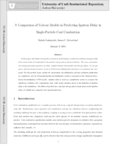 | Sutherland, James Clayton | A comparison of various models in predicting ignition delay in single-particle coal combustion | In this paper, individual coal particle combustion under laminar conditions is simulated using models with various levels of complexity for the particle and gas phase chemical kinetics. The mass, momentum and energy governing equations are fully coupled between the particle and the gas phase. In the... | 2014-01-01 | |
| 2 |
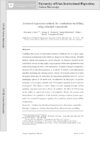 | Sutherland, James Clayton | Advanced regression methods for combustion modelling using principal components | Modelling the physics of combustion remains a challenge due to a large range of temporal and physical scales which are important in these systems. Detailed chemical kinetic mechanisms are used to describe the chemistry involved in the combustion process yielding highly coupled partial differential e... | 2014-01-01 | |
| 3 |
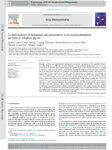 | Ring, Terry Arthur | Growth kinetics of hexagonal sub-micrometric β-tricalcium phosphate particles in ethylene glycol | Recently, uniform, non-agglomerated, hexagonal b-tricalcium phosphate (b-TCP) platelets (diameter 400-1700 nm, h 100-200 nm) were obtained at fairly moderate temperatures (90-170 C) by precipitation in ethylene glycol. Unfortunately, the platelet aspect ratios (diameter/thickness) obtained in the ... | 2014-01-01 | |
| 4 |
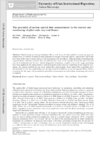 | Eddings, Eric G. | The potential of on-line optical flow measurement in the control and monitoring of pilot-scale oxy-coal flames | Digital image processing techniques oer a wide array of tools capable of extracting apparent displacement or velocity information from sequences of images of moving objects. Optical flow algorithms have been widely used in areas such as traffic monitoring and surveillance. The knowledge of instantan... | 2014-01-01 | |
| 5 |
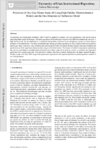 | Sutherland, James Clayton | Prediction of oxy-coal flame stand-off using high-fidelity thermochemical models and the one-dimensional turbulence model | An Eulerian one-dimensional turbulence (ODT) model is applied to simulate oxy-coal combustion, with specific aim at predicting flame stand-o distances. Detailed gas-phase chemical kinetics based on the GRI3.0 mechanism are utilized. A high-fidelity model for devolatilization is considered that predi... | 2014-01-01 | |
| 6 |
 | Smith, Philip J. | Reduced-order PCA models for chemical reacting flows | One of the most challenging aspects of turbulent combustion research is the development of reduced-order combustion models which can accurately reproduce the physics of the real system. The identification and utilization of the low dimensional manifolds in these system is paramount to understand and... | 2014-01-01 |
1 - 25 of 6
